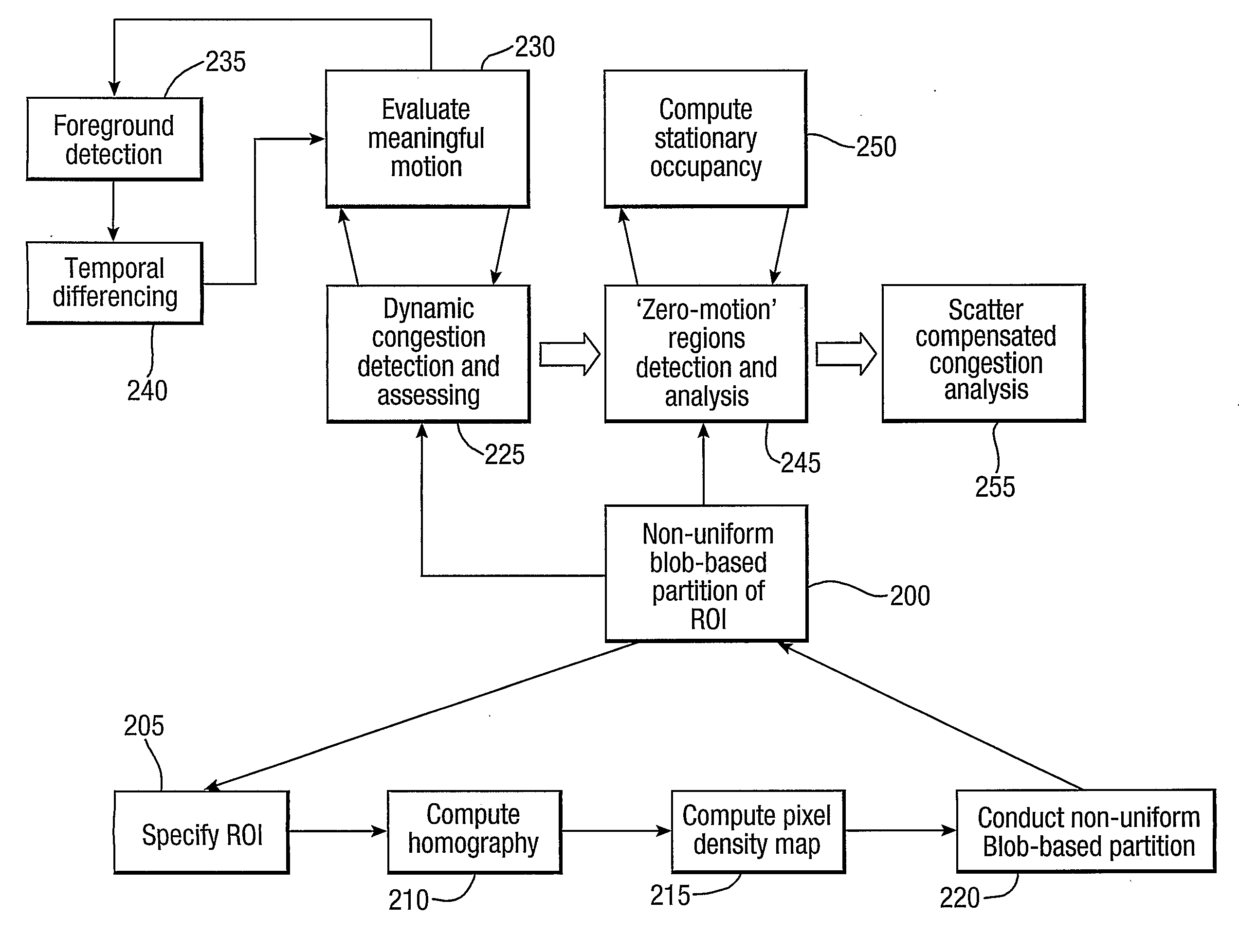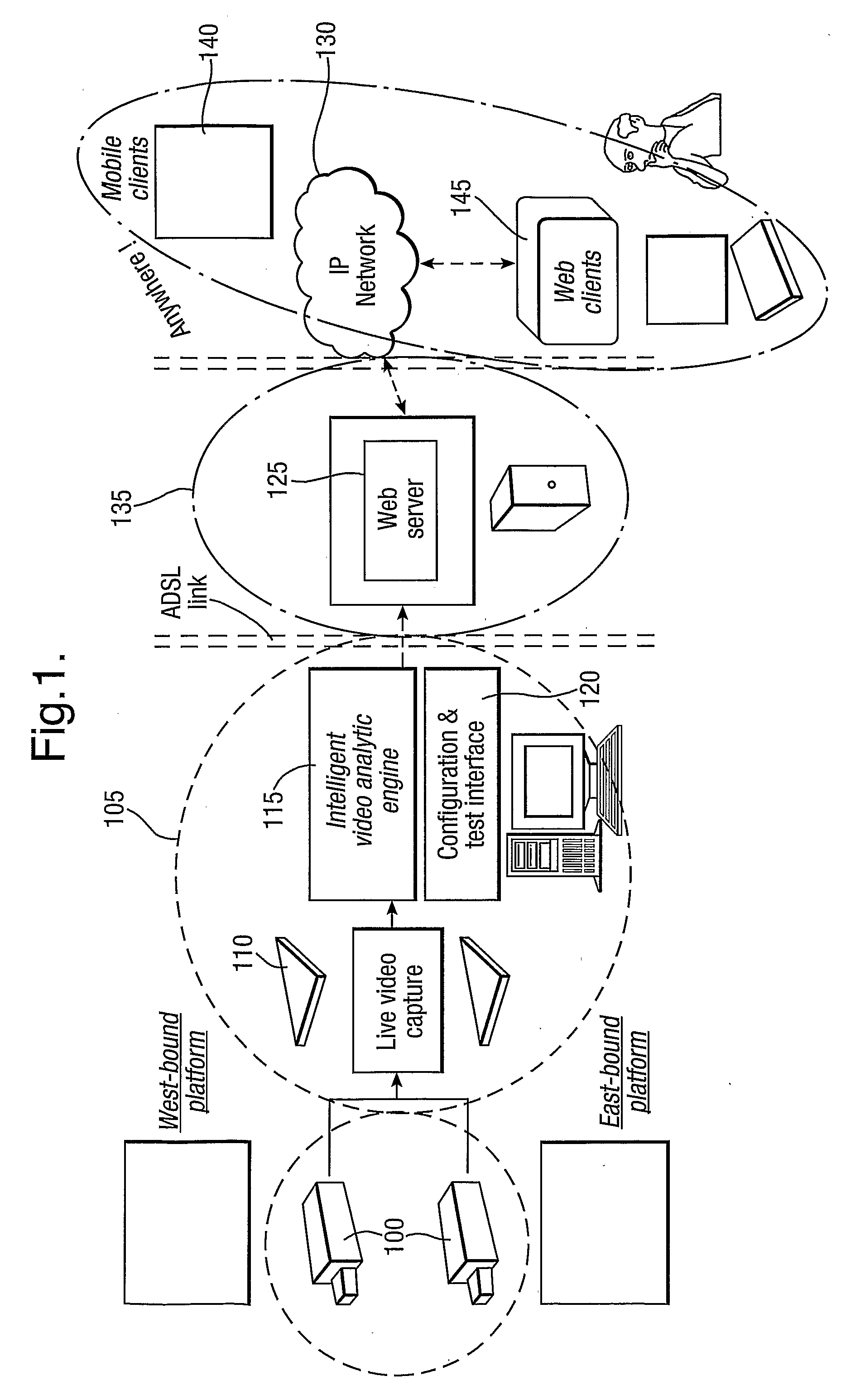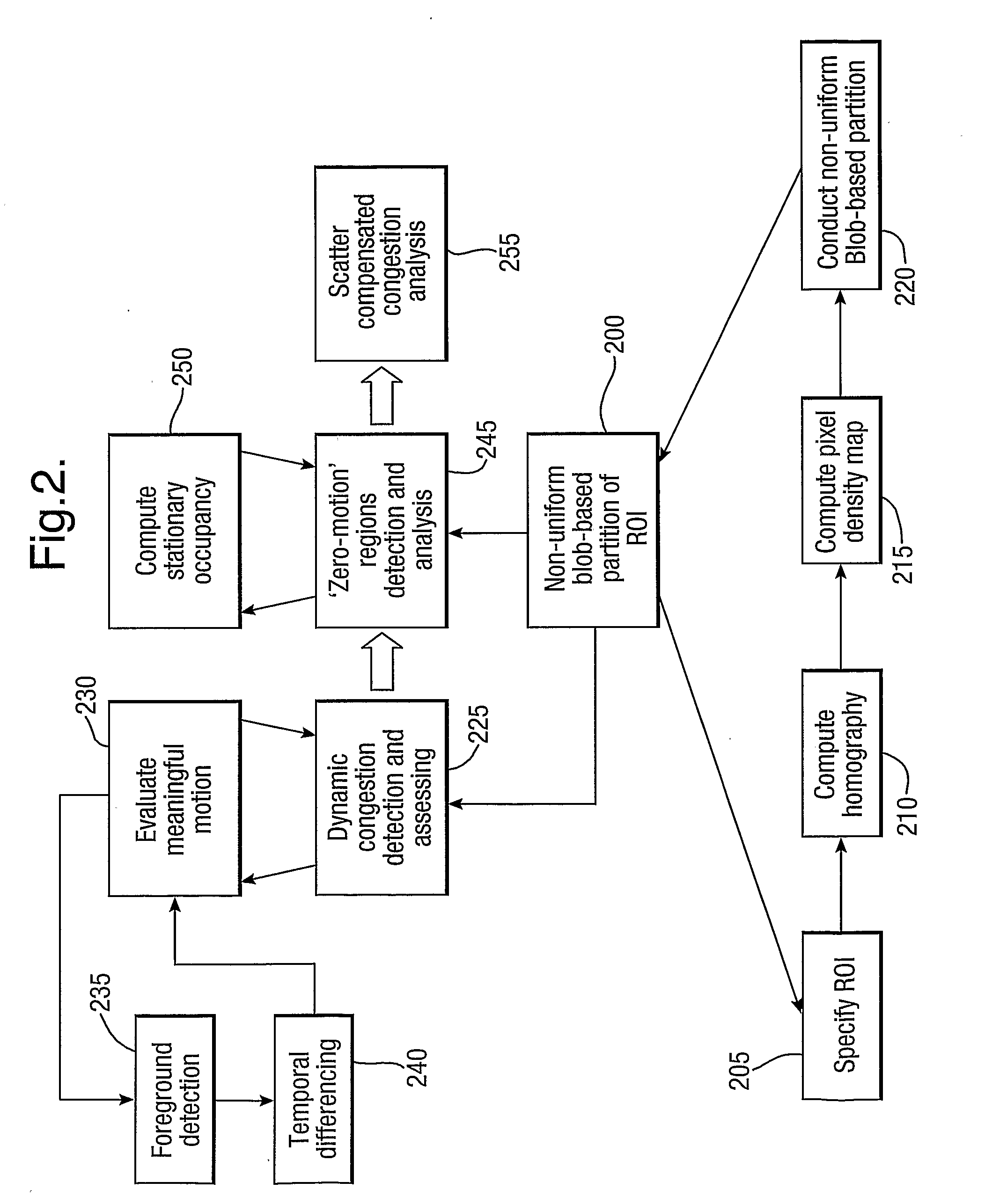Movable object status determination
a technology for moving objects and status determination, applied in the field of object detection using video images, can solve the problems of blocking the camera's view of the presence area of the train, and difficulty in reliably and consistently tracking dozens or even hundreds of objects over tim
- Summary
- Abstract
- Description
- Claims
- Application Information
AI Technical Summary
Benefits of technology
Problems solved by technology
Method used
Image
Examples
Embodiment Construction
[0045]Embodiments of aspects of the present invention provide an effective functional system using video analytics algorithms for automated train presence detection operating on live image sequences captured by surveillance video cameras. Conveniently, the system uses algorithms that are also capable of being used in crowd behaviour analysis. Analysis is performed in real-time in a low-cost, Personal Computer (PC) whilst cameras are monitoring real-world, cluttered and busy operational environments. In particular, the operational setting of interest is urban underground platforms. Against this background, the challenges to face include: diverse, cluttered and changeable environments; sudden changes in illuminations due to a combination of sources (for example, train headlights, traffic signals, carriage illumination when calling at station and spot reflections from polished platform surface); the reuse of existing legacy analogue cameras with unfavourable relatively low mounting pos...
PUM
 Login to View More
Login to View More Abstract
Description
Claims
Application Information
 Login to View More
Login to View More - R&D
- Intellectual Property
- Life Sciences
- Materials
- Tech Scout
- Unparalleled Data Quality
- Higher Quality Content
- 60% Fewer Hallucinations
Browse by: Latest US Patents, China's latest patents, Technical Efficacy Thesaurus, Application Domain, Technology Topic, Popular Technical Reports.
© 2025 PatSnap. All rights reserved.Legal|Privacy policy|Modern Slavery Act Transparency Statement|Sitemap|About US| Contact US: help@patsnap.com



